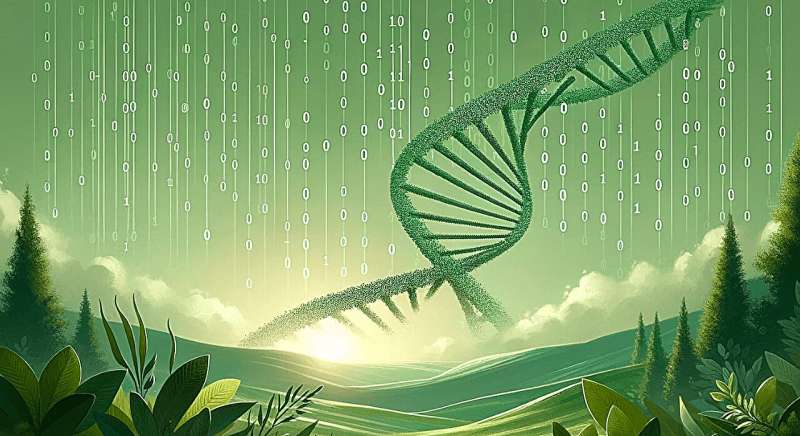This article has been reviewed according to Science X's editorial process and policies. Editors have highlighted the following attributes while ensuring the content's credibility:
fact-checked
trusted source
proofread
Health data storage has a climate cost. In the future, data may be stored in DNA

A lot of energy is required to analyze and store large amounts of data. We may therefore have to take a different approach to data storage in the future, so says Professor Søren Brunak at the University of Copenhagen.
In Denmark, we are good with health data. In fact, we are among the best in the world. But analyzing and storing huge amounts of health data comes at a climate cost.
"We have begun to consider the carbon footprint of bioinformatics and CO2 emissions resulting from data analysis," says Brunak. He is a leading scientist in the field of big data and head of Disease Systems Biology at the Novo Nordisk Foundation Center for Protein Research.
One of the main problems is the substantial amounts of data we want to archive and store for possible future use. So how do we make data storage more eco-friendly? The answer may surprise you. Because research suggests that data may be encoded into DNA, Brunak explains.
DNA data stored underground
"People have begun to design methods for data storage based on, e.g., biological materials which require no energy at all. A DNA sequence can contain a lot of information, and if stored in a 'friendly' environment DNA can thus be an eco-friendly medium for data storage," Brunak explains.
Such a "friendly" environment for DNA storage could be an abandoned mine in a cold area or underground solutions like the ones used to store seeds. He adds,
"And when you need the information, all you must do is sequence the DNA. For instance, some researchers have managed to encode digital information from a video into a DNA sequence and send it to researchers in a different country, who then sequenced the molecule and reproduced and watched the film on a screen."
Right now, this may not be the cheapest solution, but according to Brunak, such data storage solutions may become easily available in the future, as the price of DNA sequencing has decreased dramatically in recent years.
"In the future, it may cost very little to sequence a person's DNA, and DNA-based data storage solutions could therefore prove useful. We know that DNA can survive in caves and underground for thousands of years without suffering significant damage—no power required," Brunak says.
Efficient analysis using quantum computers?
We need to start considering the negative effects on the climate of using large computers for research purposes.
"There is no doubt that people have begun to realize that analyzing and storing data using computers requires energy, especially the large amounts of data used in biological and medical research, which includes genome data and clinical data from online medical records containing images and other types of data. In fact, the data of a single patient can be substantial," Brunak explains.
A lot of people expect future quantum computers—that is, extremely powerful computers—to be able to streamline calculations and thus to be more eco-friendly. However, this solution is not without its problems in relation to data storage, says Brunak.
"One of the problems with the technology is that it may not be a viable for storing data over a long period of time due to the instability of quantum mechanical bits. DNA may be a realistic option, especially for storing data you do not need to look at very often."
















